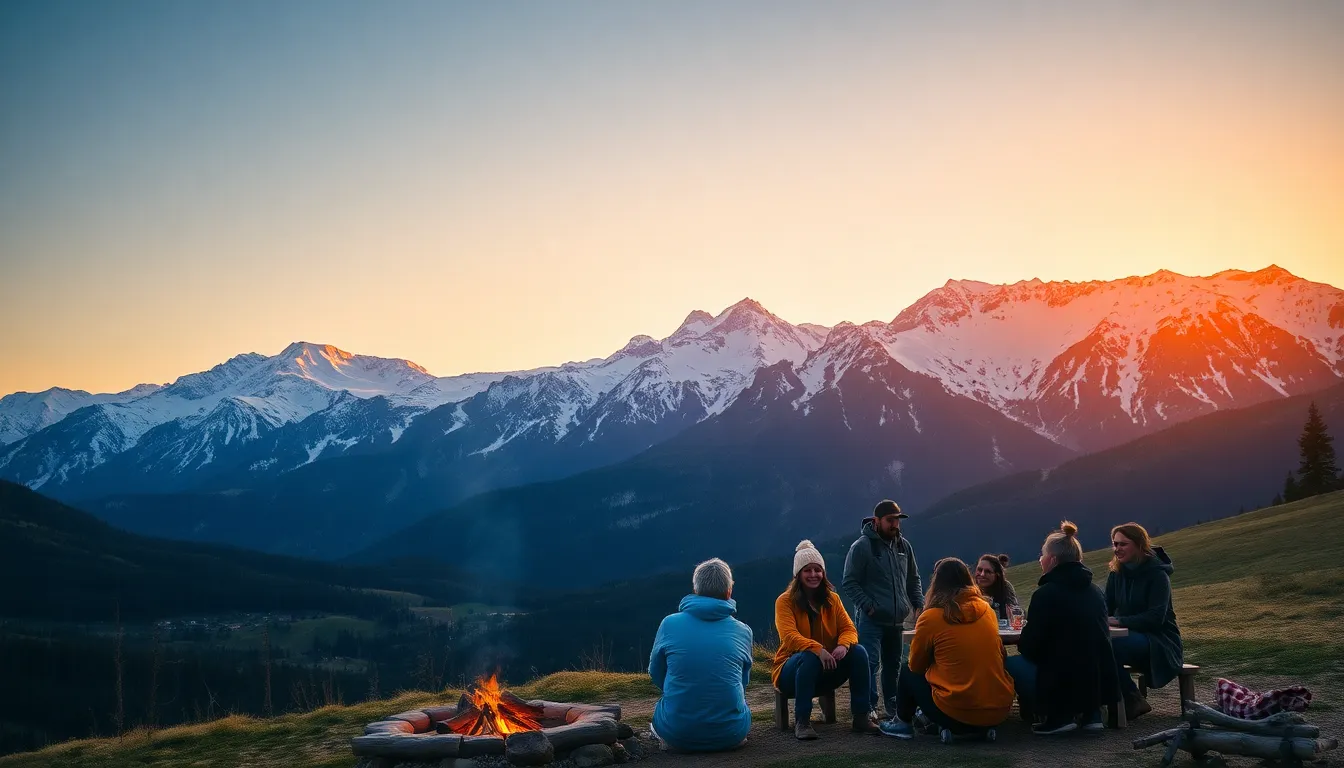As the seasons shift in Colorado, so does the clock. Understanding when to change the time can be crucial for residents and visitors alike. Daylight Saving Time brings a mix of excitement and confusion, impacting everything from daily routines to outdoor adventures.
In Colorado, the time change typically occurs twice a year, once in spring and once in fall. This adjustment affects not just schedules but also energy consumption and lifestyle. Whether planning a hike in the Rockies or attending a local event, knowing when the hour changes can help everyone stay on track and make the most of their time in this stunning state.
Table of Contents
ToggleUnderstanding Time Changes
Understanding Daylight Saving Time (DST) is crucial for residents and visitors in Colorado. Time changes impact daily schedules and activities, making awareness essential.
The Importance of Daylight Saving Time
Daylight Saving Time starts on the second Sunday in March and ends on the first Sunday in November. This change enhances daylight during evening hours, benefiting outdoor activities and events. Studies show that extended daylight reduces energy consumption by approximately 1% each day. Increased daylight also supports tourism, encouraging visitors to explore Colorado’s scenic landscapes and partake in local festivities.
Historical Context of Time Changes in Colorado
Colorado adopted Daylight Saving Time in 1918, aligning with national efforts to conserve fuel during World War I. The state officially observed DST after several legislative changes, with varying adherence over the decades. In 2020, Colorado voters approved Proposition 118, allowing the state to potentially remain on permanent Daylight Saving Time. This historical context illustrates the evolving understanding of time changes and their significance for residents’ lives and activities in Colorado.
When Does the Time Change in Colorado?

Understanding when the time changes in Colorado enables residents and visitors to adapt their schedules effectively. The time change occurs twice a year, aligning with Daylight Saving Time (DST) regulations.
Specific Dates for Daylight Saving Time
Daylight Saving Time in Colorado begins on the second Sunday in March and ends on the first Sunday in November. For 2024, the time will spring forward at 2:00 AM on March 10th and fall back at 2:00 AM on November 3rd. These dates signify when clocks move forward one hour in spring and return one hour in fall, impacting various activities and schedules.
How Time Changes Impact Daily Life
Time changes significantly impact daily life in Colorado. The shift to DST results in longer daylight hours during the evening, facilitating additional outdoor activities and events. It influences people’s energy consumption patterns, with studies indicating a reduction of about 1% in daily energy use. Moreover, residents experience adjustments in their routines, including altered sleeping patterns and modified work schedules. Awareness of the time change helps individuals plan more effectively for hikes, gatherings, and other leisure activities.
The Effects of Time Changes
Time changes in Colorado significantly affect various aspects of life, from health and wellbeing to economic dynamics. Understanding these effects helps residents and visitors navigate their routines effectively.
Health and Wellbeing Considerations
Health and wellbeing are often influenced by time changes, particularly through sleep patterns. Researchers indicate that transitioning into Daylight Saving Time (DST) can disrupt sleep, leading to increased fatigue and decreased productivity. Studies show a rise in heart attack rates in the week following the switch, attributed to the abrupt change in sleep schedules. Furthermore, adjusting to new wake times can heighten stress levels, affecting mental health. Ensuring adequate sleep and establishing healthy routines before the transition can mitigate these negative impacts.
Economic Impacts on Business and Travel
DST changes impact businesses by shifting consumer behavior and travel patterns. Extended daylight hours encourage outdoor activities and increase patronage at restaurants, retailers, and attractions. Researchers found that retail sales can increase by about 3% in the evenings during DST periods. Tourism thrives, as longer days motivate visitors to explore Colorado’s attractions. Additionally, the travel sector experiences heightened demand for evening activities, leading to increased bookings and reservations. Businesses that adapt to these changes can capitalize on the benefits of extended daylight, boosting local economies.
Public Opinion on Time Changes
Public opinion on time changes in Colorado reflects a mix of support and opposition. Many residents express concerns over the disruption to their daily routines and health impacts associated with the time shifts.
Survey Results from Colorado Residents
Surveys conducted among Colorado residents indicate that approximately 60% favor eliminating the time change altogether. Participants cite the adverse effects of adjusting sleep patterns and the shift in daylight hours as key issues. About 75% express a preference for remaining on standard time year-round, emphasizing the need for stability in their daily activities. Only around 25% support continuing the current practice of switching between standard time and Daylight Saving Time.
Legislative Actions and Proposals
Legislative actions reflect the sentiments of Colorado residents regarding time changes. In 2020, Proposition 118 passed, paving the way for a potential permanent shift to Daylight Saving Time, should federal legislation allow it. The proposal received positive feedback, with advocates highlighting increased outdoor activity and economic benefits as key motivators. Ongoing discussions in the Colorado General Assembly seek to further explore the implications of this change, ensuring that public opinion remains a priority in the legislative process.
Understanding when the time changes in Colorado is crucial for maximizing enjoyment and productivity. The shift to Daylight Saving Time not only enhances outdoor experiences but also influences energy consumption and economic activity. As residents and visitors adapt to these changes, it’s essential to consider the potential impacts on health and daily routines.
With ongoing discussions about the future of DST in Colorado, awareness of these time adjustments will remain important. Staying informed helps everyone navigate the effects of time changes, ensuring a smoother transition and a better experience in this beautiful state.



